#Healthcare Transportation Services trends
Explore tagged Tumblr posts
Text
How AI is Transforming Everyday Technology
Introduction
Welcome to TechtoIO! Today, we delve into one of the most exciting developments in modern technology: artificial intelligence (AI). AI has moved beyond the realm of science fiction and is now an integral part of our daily lives. From smart homes to personalized recommendations, AI is transforming everyday technology in ways we once only dreamed of. In this article, we explore how AI is reshaping various aspects of our lives and what we can expect in the near future. Read to continue
#Innovation Insights#TagsAI automated trading#AI content recommendations#AI customer service#AI energy management#AI entertainment industry#AI fraud detection#AI home security#AI in education 2024#AI in finance#AI in gaming#AI in healthcare 2024#AI in transportation#AI in VR and AR#AI predictive maintenance#AI traffic management#AI transforming technology#AI voice assistants#autonomous vehicles AI#personalized learning AI#smart home AI#Technology#Science#business tech#Adobe cloud#Trends#Nvidia Drive#Analysis#Tech news#Science updates
1 note
·
View note
Text
Finally feeling vindicated after months of predicting the economic whiplash and downturn that would inevitably follow the Covid policies, we’re now seeing the impacts bear down on the economy in full force.
The latest employment report underscores this reality, with just a meager 12,000 jobs added in October 2024—and that’s largely thanks to government hiring. If not for the 40,000 new government jobs, these numbers would look even worse.
Here’s a breakdown of the latest data that the administration doesn’t want to highlight:
Establishment Survey Highlights
Total Private Sector: 28,000 jobs lost—a clear sign of trouble for the core of our economy.
Goods-Producing Sector: 37,000 jobs lost, with manufacturing hit hardest.
Construction: Added just 8,000 jobs, a painfully low number for an industry that typically drives growth.
Manufacturing: Down by a staggering 46,000 jobs—a blow to American industry.
Retail Trade: Lost 1,000 jobs, indicating that consumer spending may be faltering.
Transportation and Warehousing: Down 4,000 jobs, another worrying sign as logistics slow.
Temporary Help Services: Plummeted by 49,000 jobs, a typical canary in the coal mine for future employment trends.
Healthcare: Added 51,000 jobs, providing some stability, yet not enough to offset broader declines.
Government Jobs: Increased by 40,000—masking deeper problems in the private sector.
69 notes
·
View notes
Text
GIS In Our Daily Lives
The involvement of Geographic Information Systems (GIS) in our daily lives is pervasive, influencing and enhancing various aspects across different sectors. The integration of GIS into everyday activities has become integral for decision-making, planning, and optimizing resources. GIS helps city planners and transportation experts to provide them with information like maps, satellite pictures, population statistics, and infrastructure data. GIS helps them make better decisions when designing cities and transportation systems that are sustainable and good for the environment.
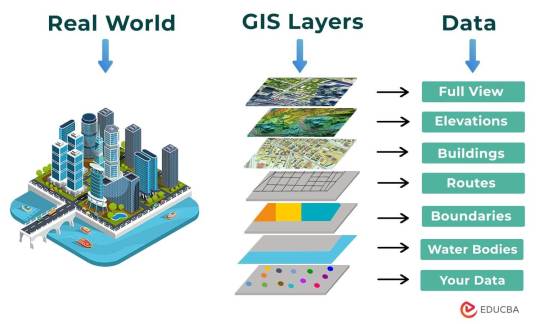
The following points elucidate the notable involvement of GIS in our daily lives:
Navigation and Location Services: GIS provides monitoring functions through the visual display of spatial data and precise geographical positioning of monitored vehicles, whereas GPS provides accurate, clear, and precise information on the position and navigation of a monitored or tracked vehicle in real-time and at the exact location.GIS is at the core of navigation applications and location-based services on smartphones. It enables accurate mapping, real-time navigation, and geolocation services, assisting individuals in finding locations, planning routes, and navigating unfamiliar areas.
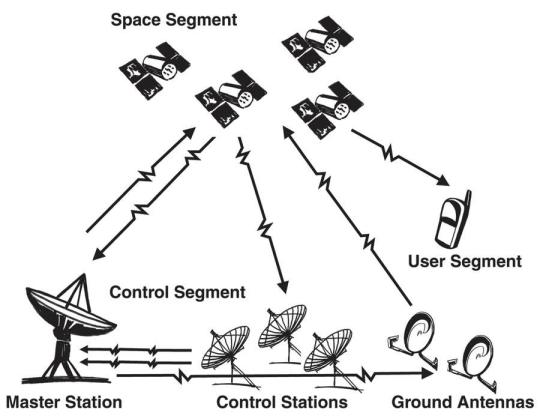
E-Commerce and Delivery Services: GIS software is a powerful tool for supply chain network planning. It helps determine the optimal location for distribution centers, warehouses, or other supply facilities. GIS is utilized in logistics and delivery services for optimizing routes, tracking shipments, and ensuring timely deliveries. E-commerce platforms leverage GIS to enhance the efficiency of their supply chain and last-mile delivery processes.

Weather Forecasting and Disaster Management: Many states are using GIS dashboard to monitor the rainfall across the state, on a real-time basis, from the data shared by rain sensors installed at various locationsGIS plays a crucial role in weather forecasting and disaster management. It assists meteorologists in analyzing spatial data, predicting weather patterns, and facilitating timely responses to natural disasters by mapping affected areas and coordinating emergency services.

Healthcare Planning and Disease Monitoring: Geographic Information Systems enable the visualization and monitoring of infectious diseases. Additionally GIS records and displays the necessary information that health care needs of the community as well as the available resources and materials. GIS supports public health initiatives by mapping the spread of diseases, analyzing healthcare resource distribution, and assisting in the planning of vaccination campaigns. It aids in identifying high-risk areas and optimizing healthcare service delivery.

Social Media and Geo-tagging: GIS also helps in geotagging and other location related information in posts, it’s tools can map and visualize the spatial distribution of social media activity. This analysis can reveal trends, hotspots, and patterns in user engagement across different geographic areas. Many social media platforms incorporate GIS for geo-tagging, allowing users to share their location and experiences. This feature enhances social connectivity and facilitates the sharing of location-specific information.
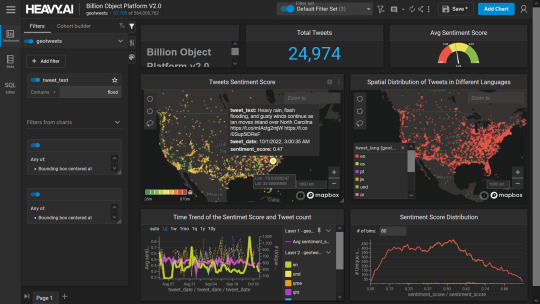
Smart City Initiatives: The Geographic Information System (GIS) offers advanced and user-friendly capabilities for Smart City projects and allows to capture, store and manipulate, analyze and visualize spatially referenced data. It is used for spatial analysis and modeling. It is the cornerstone of smart city planning, enabling the integration of data for efficient urban management. It supports initiatives related to traffic management, waste disposal, energy consumption, and overall infrastructure development.
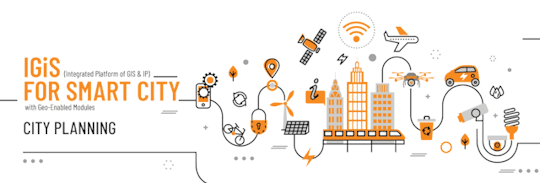
Education and Research: GIS is increasingly utilized in education and research for visualizing and analyzing spatial data. It enables students and researchers to explore geographic relationships, conduct field studies, and enhance their understanding of various subjects.

Agricultural Management and Precision Farming: Farmers leverage GIS to optimize agricultural practices by analyzing soil conditions, crop health, and weather patterns. Precision farming techniques, facilitated by GIS, contribute to increased crop yields and sustainable farming practices.

Real Estate and Property Management: In the real estate sector, GIS aids in property mapping, land valuation, and site selection. It provides real estate professionals with valuable insights into spatial relationships, market trends, and optimal development opportunities.
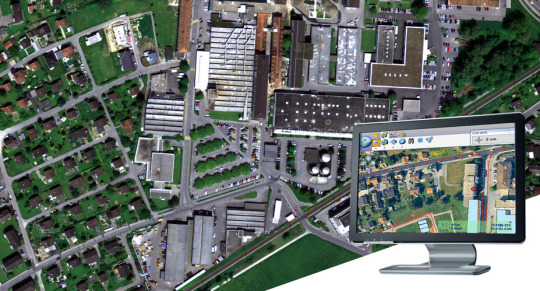
Tourism and Recreation: GIS enhances the tourism industry by providing interactive maps, route planning, and location-based information. It assists tourists in exploring destinations, finding attractions, and navigating efficiently.

The broad and varied involvement of GIS in our daily lives underscores its significance as a technology that not only facilitates geographic data analysis but also contributes to the efficiency, safety, and interconnectedness of modern society. As GIS applications continue to evolve, their impact on daily activities is expected to further expand and refine.
#gis#architectdesign#architecture#city#education#geographic information system(gis)#geographical indication
12 notes
·
View notes
Text
Expert Advice on Buying Your First Home in Dubai
Buying your first home in Dubai is an exciting milestone, but it can also be a complex process. This blog provides expert advice to help you navigate the journey of buying your first home in Dubai successfully.
For more information on home loans, visit home loan dubai.
Defining Your Budget
Assess Your Finances: Start by assessing your current financial situation, including your income, savings, and existing debts. Determine how much you can afford to spend on a property without compromising your financial stability.
Mortgage Pre-Approval: Obtain a mortgage pre-approval to determine your budget and streamline the buying process. A pre-approval gives you a clear idea of your borrowing capacity and demonstrates to sellers that you are a serious and qualified buyer.
Down Payment and Additional Costs: Ensure you have sufficient funds for the down payment, typically 20-25% of the property's value for expatriates. Consider additional costs such as registration fees, agent commissions, maintenance charges, and moving expenses.
For property purchase options, explore Buy Luxury Property in UAE.
Researching the Market
Market Trends: Stay informed about current market trends, including property prices, demand and supply dynamics, and future developments. Utilize online resources, real estate reports, and market analyses to stay updated.
Location Analysis: Analyze different neighborhoods in Dubai to identify areas that align with your lifestyle and investment goals. Consider factors such as proximity to schools, workplaces, and amenities.
Property Types: Familiarize yourself with the different types of residential properties available in Dubai, such as apartments, villas, townhouses, and penthouses. Each type has its own advantages and considerations.
For mortgage services, consider Dubai Mortgage Advisors.
Choosing the Right Property
Location: Choose a location that offers easy access to essential amenities such as schools, healthcare facilities, shopping malls, and public transportation. Popular residential areas in Dubai include Downtown Dubai, Dubai Marina, Palm Jumeirah, and Arabian Ranches.
Property Condition: Inspect the property for any structural issues, maintenance needs, and potential repairs. Hire a professional inspector if necessary to ensure the property is in good condition.
Developer Reputation: Research the reputation of the property developer. Established developers with a track record of delivering high-quality projects on time are usually a safer choice.
For rental property management, visit Apartments For Rent in Dubai.
Legal and Regulatory Considerations
Title Deed Verification: Ensure the property has a clear title and is free from any legal disputes or encumbrances. The DLD provides title deed verification services to help buyers confirm the property's legal status.
Sales Agreement: Review the sales agreement carefully and seek legal advice if needed. Ensure all terms and conditions are clearly outlined, including the price, payment schedule, and any additional costs.
Residency Visa: Property buyers in Dubai may be eligible for a residency visa. The visa duration and requirements vary depending on the property's value and the buyer's nationality. Consult with the DLD or a legal expert to understand the specific visa requirements and benefits.
For property sales, visit Sell Your Property.
The Buying Process
Property Search: Use online property portals and engage with reputable real estate agents to find suitable properties. Schedule viewings to inspect potential properties and assess their condition.
Making an Offer: When making an offer, consider the current market conditions and the property's value. Be prepared to negotiate and make counteroffers if necessary. Your real estate agent can assist you in negotiating the best deal.
Finalizing the Purchase: Once the offer is accepted, both parties sign a Memorandum of Understanding (MOU) outlining the agreed terms. Pay the initial deposit (usually 10% of the property's value) and proceed with obtaining the necessary approvals from the DLD.
Real-Life Success Story
Consider the case of Emily, a first-time homebuyer who successfully purchased her first home in Dubai. Emily conducted thorough research, obtained mortgage pre-approval, and chose a reputable developer. By following the steps outlined in this guide, Emily secured a beautiful apartment in Dubai Marina and enjoys the vibrant lifestyle and amenities the area offers.
Future Trends in Dubai Real Estate
Sustainable Developments: There is a growing demand for eco-friendly and sustainable properties in Dubai. Developers are increasingly incorporating green building practices and energy-efficient features into their projects.
Smart Homes: The adoption of smart home technology is on the rise. Properties equipped with advanced security systems, automated lighting, and climate control are becoming more popular.
Mixed-Use Communities: Integrated communities that offer a mix of residential, commercial, and recreational facilities are gaining popularity. These developments provide residents with a convenient and holistic living experience.
Conclusion
Buying your first home in Dubai can be a rewarding experience with the right preparation and knowledge. By defining your budget, researching the market, choosing the right property, and navigating legal considerations, you can make a successful investment. For more resources and expert advice, visit home loan dubai.
2 notes
·
View notes
Text
Luxurious Living Options near Chembur: 1 & 2 BHK Homes

Introduction
Chembur, a vibrant suburb nestled in the heart of Mumbai, has emerged as a coveted residential destination blending modernity with historical charm. This article explores the allure of living in this dynamic locality, particularly focusing on the luxurious 1 & 2 BHK homes that define its real estate landscape.
Overview of Chembur as a Residential Destination
Chembur's journey from a quaint village to a bustling suburb mirrors Mumbai's rapid urbanization. Originally known for its greenery and tranquil ambiance, Chembur has transformed into a sought-after residential hub. Today, it strikes a delicate balance between serene residential pockets and bustling commercial zones.
Demographic Profile and Community Dynamics
Chembur boasts a diverse demographic profile, attracting professionals, families, and retirees alike. The community is characterized by its cosmopolitan nature, fostering a blend of cultures and lifestyles. This diversity enriches the social fabric, creating a vibrant and inclusive neighborhood environment.
Significance of Location in Real Estate
Chembur's strategic location enhances its appeal in the real estate market. Situated in eastern Mumbai, it enjoys seamless connectivity to major business districts like Bandra-Kurla Complex (BKC) and South Mumbai. Proximity to the Eastern Freeway and Santa Cruz-Chembur Link Road ensures swift access to other parts of the city, making it a preferred choice for commuters.
Accessibility to Major Transportation Hubs
One of Chembur's standout features is its exceptional connectivity. The presence of Chembur railway station, a key suburban rail junction, facilitates convenient travel within Mumbai and beyond. Residents benefit from frequent suburban train services and direct routes to Mumbai's commercial centers, reducing commute times and enhancing accessibility.
Proximity to Essential Amenities and Facilities
Living in Chembur offers residents a plethora of amenities essential for modern urban living. From reputed educational institutions and healthcare facilities to shopping malls and recreational centers, Chembur ensures that every necessity and luxury is within easy reach. This comprehensive infrastructure contributes to a high standard of living and convenience for its residents.

Luxury Features of 1 & 2 BHK Homes
Architectural Design and Building Features
Modern 1 & 2 BHK homes in Chembur epitomize contemporary architectural trends. Designed with a blend of aesthetics and functionality, these residences showcase innovative building practices and premium materials. Emphasis is placed on sustainable construction techniques, integrating eco-friendly elements to minimize environmental impact.
Integration of Sustainable Building Practices
In response to global environmental concerns, Chembur's real estate developers prioritize sustainability. Green building certifications and energy-efficient designs are hallmarks of new residential projects. Features like rainwater harvesting, solar panels, and waste management systems not only reduce ecological footprint but also enhance the overall living experience.
Interior Layout and Space Utilization
The layout of 1 & 2 BHK homes in Chembur is meticulously planned to optimize space utilization. Compact yet ergonomic designs ensure that every square foot is efficiently utilized. Open floor plans, modular kitchens, and multifunctional living spaces cater to the diverse needs of residents, promoting a clutter-free and comfortable living environment.
In conclusion, Chembur stands out as a dynamic residential destination offering luxurious 1 & 2 BHK homes that blend modernity with convenience. Its historical evolution, coupled with strategic location and sustainable development practices, underscores its appeal among homebuyers seeking an upscale living experience in Mumbai's bustling landscape.
2 notes
·
View notes
Text
🤖 Artificial Intelligence (AI): What It Is and How It Works
Artificial Intelligence (AI) is transforming the way we live, work, and interact with technology. Let's break down what AI is and how it works. 🌐
What Is AI?
AI refers to the simulation of human intelligence in machines designed to think and learn like humans. These intelligent systems can perform tasks that typically require human intelligence, such as recognizing speech, making decisions, and translating languages.
How AI Works:
Data Collection 📊 AI systems need data to learn and make decisions. This data can come from various sources, including text, images, audio, and video. The more data an AI system has, the better it can learn and perform.
Machine Learning Algorithms 🤖 AI relies on machine learning algorithms to process data and learn from it. These algorithms identify patterns and relationships within the data, allowing the AI system to make predictions or decisions.
Training and Testing 📚 AI models are trained using large datasets to recognize patterns and make accurate predictions. After training, these models are tested with new data to ensure they perform correctly.
Neural Networks 🧠 Neural networks are a key component of AI, modeled after the human brain. They consist of layers of interconnected nodes (neurons) that process information. Deep learning, a subset of machine learning, uses neural networks with many layers (deep neural networks) to analyze complex data.
Natural Language Processing (NLP) 🗣 NLP enables AI to understand and interact with human language. It’s used in applications like chatbots, language translation, and sentiment analysis.
Computer Vision 👀 Computer vision allows AI to interpret and understand visual information from the world, such as recognizing objects in images and videos.
Decision Making and Automation 🧩 AI systems use the insights gained from data analysis to make decisions and automate tasks. This capability is used in various industries, from healthcare to finance, to improve efficiency and accuracy.
Applications of AI:
Healthcare 🏥: AI aids in diagnosing diseases, personalizing treatment plans, and predicting patient outcomes.
Finance 💰: AI enhances fraud detection, automates trading, and improves customer service.
Retail 🛍: AI powers recommendation systems, optimizes inventory management, and personalizes shopping experiences.
Transportation 🚗: AI drives advancements in autonomous vehicles, route optimization, and traffic management.
AI is revolutionizing multiple sectors by enhancing efficiency, accuracy, and decision-making. As AI technology continues to evolve, its impact on our daily lives will only grow, opening up new possibilities and transforming industries.
Stay ahead of the curve with the latest AI insights and trends! 🚀 #ArtificialIntelligence #MachineLearning #Technology #Innovation #AI
3 notes
·
View notes
Text
Trends Shaping the Development of BDA-Approved Plot Communities in Bangalore by Reliaable Developers

BDA-approved plot communities are establishing themselves as hubs of modern living in Bangalore. Sanctioned by the Bangalore Development Authority (BDA), these communities lead a change towards more sustainable, connected, and community-focused neighborhoods. As Bangalore expands, so does the need to understand the trends shaping these developments. In this blog, we’ll explore the key trends influencing BDA-approved plot communities in Bangalore.
Sustainable Development:
In response to growing environmental concerns, developers are prioritizing sustainable practices in the construction and operation of BDA-approved plot communities. By minimizing resource consumption and reducing pollution, these communities aim to contribute to a healthier and more eco-friendly urban environment. In the constant effort of eco-friendly urban development, certain developers, like Reliaable Developers are aligning their projects with eco-conscious practices. Take, for instance, Reliaable Signature of South, where a dedicated focus on sustainability is clear through the installation of rainwater harvesting systems. Such initiatives reflect a growing trend within BDA-approved plot communities towards minimizing environmental impact and fostering greener urban landscapes.
Integrated Amenities:
BDA-approved plot communities are designed to offer residents a comprehensive range of amenities and services within proximity to their homes. These amenities may include playgrounds, jogging tracks, swimming pools, supermarkets, restaurants, healthcare facilities, schools, and childcare centers. Projects like Reliaable Dollars Colony that have garnered positive Reliaable Developers reviews boast an array of amenities ranging from a cafeteria to a park, a clubhouse, a gym, and a play area. These offerings show the company’s commitment to ensuring residents have access to essential facilities and recreational opportunities within the community itself.
Connectivity and Accessibility:
Recognizing the importance of connectivity in urban living, developers are strategically locating BDA-approved plot communities in areas with good access to transportation networks. These communities are typically situated near major roads, highways, and public transportation routes, facilitating convenient travel to and from key destinations such as workplaces, educational institutions, shopping centers, and healthcare facilities. Reliaable Developers, for instance, strategically position their projects for easy access to key destinations. Reliaable Prime City’s proximity to an educational institution like Sorsfort International School, healthcare facilities like Springleaf Hospital, and shopping centers demonstrate this approach, reflecting a broader trend towards creating well-connected living environments.

Focus on Community Living:
BDA-approved plot communities are designed to foster a strong sense of community among residents. Communal spaces such as parks, gardens, clubhouses, and community centers serve as gathering points where residents can come together to socialize, relax, and build relationships. Companies like Reliaable Developers actively foster a sense of belonging among residents. Their projects serve as hubs for social interaction and community engagement, offering spaces where like-minded individuals can come together and form beautiful connections. This emphasis on community-building contributes to a more peaceful and supportive living environment.
Integration of Mixed-Use Developments:
To create vibrant and self-sustaining neighborhoods, BDA-approved plot communities often incorporate mixed-use developments that combine residential, commercial, and recreational functions within a single area. Mixed-use developments may include retail shops, offices, restaurants, cafes, entertainment venues, and public spaces, creating an urban environment that is active and lively throughout the day. Reliaable Developers, for instance, embrace the concept of mixed-use developments, combining residential, commercial, and recreational spaces within a single neighborhood. This approach not only enhances convenience for residents but also fosters a vibrant urban environment.
Conclusion:
In conclusion, the development of BDA-approved plot communities in Bangalore is characterized by a commitment to sustainability, amenities, and community engagement. As these trends continue to shape urban development in Bangalore, residents can look forward to a more fulfilling living experience, characterized by convenience, connectivity, and a strong sense of belonging. These trends are not only shaping the future of Bangalore but also setting new standards for urban living in India.
About Reliaable Developers:
Established in 1999 by Dr. Rama Reddy and Mr. H.P. Rama Reddy, Reliaable Developers is a leading name in Bangalore’s real estate. Led by Dr. Rama Reddy and Dr. Mahendra Reddy, the company blends tradition and innovation. With a focus on BDA-approved plots, they’ve delivered over 15,000 plots across prime Bangalore locations. Customers often praise the company’s dedication to excellence and its prime locations of BDA-approved plots in Reliaable Developers reviews, further solidifying its positive reputation in the real estate sector. Notable projects include Reliaable Lifestyle and Dollar Colony, reflecting their commitment to quality and timely delivery. They envision a future driven by innovation and sustainability.
#reliaable developers#reliaable developer projects#reliaable developers bangalore reviews#reliaable developers reviews#reliaable developers bangalore#reliaable developers projects#reliaable developers ecity#reliaable developers plots#BDA Plots near me#BDA Plotted development#BDA Plots bangalore#bda plots for sale in bangalore
3 notes
·
View notes
Text
EXPLANATION OF DATA SCIENCE
Data science
In today's data-driven world, the term "data science" has become quite the buzzword. At its core, data science is all about turning raw data into valuable insights. It's the art of collecting, analyzing, and interpreting data to make informed decisions. Think of data as the ingredients, and data scientists as the chefs who whip up delicious insights from them.

The Data Science Process
Data Collection: The journey begins with collecting data from various sources. This can include anything from customer surveys and social media posts to temperature readings and financial transactions.
Data Cleaning: Raw data is often messy and filled with errors and inconsistencies. Data scientists clean, preprocess, and organize the data to ensure it's accurate and ready for analysis.
Data Analysis: Here's where the real magic happens. Data scientists use statistical techniques and machine learning algorithms to uncover patterns, trends, and correlations in the data. This step is like searching for hidden gems in a vast treasure chest of information.
Data Visualization: Once the insights are extracted, they need to be presented in a way that's easy to understand. Data scientists create visualizations like charts and graphs to communicate their findings effectively.
Decision Making: The insights obtained from data analysis empower businesses and individuals to make informed decisions. For example, a retailer might use data science to optimize their product inventory based on customer preferences.

Applications of Data Science
Data science has a wide range of applications in various industries.
Business: Companies use data science to improve customer experiences, make marketing strategies more effective, and enhance operational efficiency.
Healthcare: Data science helps in diagnosing diseases, predicting patient outcomes, and even drug discovery.
Finance: In the financial sector, data science plays a crucial role in fraud detection, risk assessment, and stock market predictions.
Transportation: Transportation companies use data science for route optimization, predicting maintenance needs, and even developing autonomous vehicles.
Entertainment: Streaming platforms like Netflix use data science to recommend movies and TV shows based on your preferences.
Why Data Science Matters
Data science matters for several reasons:
Informed Decision-Making: It enables individuals and organizations to make decisions based on evidence rather than guesswork.
Innovation: Data science drives innovation by uncovering new insights and opportunities.
Efficiency: Businesses can streamline their operations and reduce costs through data-driven optimizations.
Personalization: It leads to personalized experiences for consumers, whether in the form of product recommendations or targeted advertisements.
In a nutshell, data science is the process of turning data into actionable insights. It's the backbone of modern decision-making, fueling innovation and efficiency across various industries. So, the next time you hear the term "data science," you'll know that it's not just a buzzword but a powerful tool that helps shape our data-driven world.
Overall, data science is a highly rewarding career that can lead to many opportunities. If you're interested in this field and have the right skills, you should definitely consider it as a career option. If you want to gain knowledge in data science, then you should contact ACTE Technologies. They offer certifications and job placement opportunities. Experienced teachers can help you learn better. You can find these services both online and offline. Take things step by step and consider enrolling in a course if you’re interested.
Thanks for reading.
2 notes
·
View notes
Text
What to Expect from the Tech Industry in 2023: A Look into the Future of Technology

The tech industry has seen tremendous growth and innovation over the past few years, and it looks like this trend isn’t going anywhere anytime soon. In 2023, tech innovation is sure to be at the forefront of conversation, especially when it comes to new technologies. And the pace of innovation is only likely to get racier. What we are discussing today may be completely outdated by the end of 2023. So, what can we expect from the tech industry in 2023? Let’s look.
ChatGBT

ChatGBT is a chatbot-based AI software that interacts with users in real time. It combines advanced Natural Language Processing (NLP) technology and enhanced algorithms to create natural and engaging conversations. ChatGBT can provide useful customer service functions such as fast issue resolution and recommendation services. ChatGBT also has the ability to automatically generate sophisticated chatbot marketing campaigns with data-driven targeting capabilities. ChatGBT is a powerful tool for modern businesses to increase customer satisfaction and streamline operations, thus making it potentially one of the most disruptive technologies of 2023.
Autonomous Cars

Autonomous cars are driverless vehicles that can navigate roads on their own without any human intervention. While these vehicles are still being tested today, they are expected to become commonplace by the second quarter of 2023. Autonomous cars have the potential to revolutionize transportation, making it quicker, safer, and more efficient than ever before.
Artificial Intelligence (AI)

AI is another topic that will likely dominate tech discussions for years. It is set to make huge and visible advancements specifically in the coming three years. And AI-assisted applications are predicted to become widely available and used in a variety of sectors ranging from media to manufacturing and banking to hospitality.
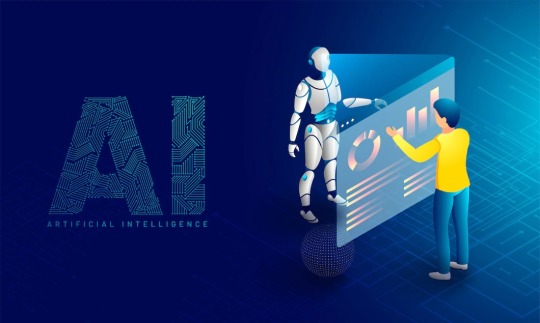
AI involves machines performing tasks that would normally require human intelligence such as decision-making or problem-solving. It has already made its way into many aspects of our lives including healthcare, finance, education, and more. It is only expected to become even more widespread and powerful in 2023.
Tech in the Routine Employee Nurturing Space

AI and ML-based content and image-creating sites have been around for a year or two. But with further advances in both AI and ML technologies, they are quickly becoming an everyday part of the creative process for many people. AI-content creation sites and apps allow users to quickly and easily create AI-generated content tailored specifically to their needs. Additionally, AI-generated images, from landscapes to photographs, can help bring depth and life to projects. This type of AI-generated content is already helping industries such as advertising, marketing, and entertainment by providing them with quick and easy options for creating visually appealing projects. AI and ML is also creating a buzz in the employee engagement space with a few innovative companies like Hubengage integrating the tech into their employee app solutions.
Cybersecurity

As technology becomes more advanced, so does the need for greater cybersecurity measures. Cybersecurity is an essential part of digital operations as hackers become increasingly sophisticated in their methods of attack. Cybersecurity measures should be updated regularly to ensure that all data remains safe and secure from malicious actors online.
Robotics

In recent years, robots have become increasingly commonplace in a variety of industries. Since robotics automates mundane tasks and frees up time for employees, it allows them to focus on more complex projects. Additionally, robotics can also reduce costs associated with human labor.
From factory production lines to medical procedures, robots are quickly becoming an essential part of our lives; and it is poised to make great strides in the coming years as more companies and organizations explore its potential.

The healthcare industry is one area where robotics has seen significant growth in recent years. Robots have allowed doctors and nurses to perform operations with greater precision and accuracy than ever before, resulting in improved patient outcomes.
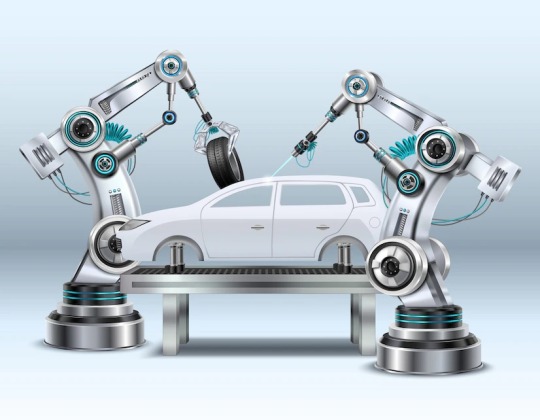
Automakers too are using robotic technology to increase safety and reduce manufacturing costs. Furthermore, advances in artificial intelligence (AI) will allow robots to learn from their mistakes and become even more efficient over time. So, 2023 looks set to be an exciting year for robotics!
Biotech and Genomics
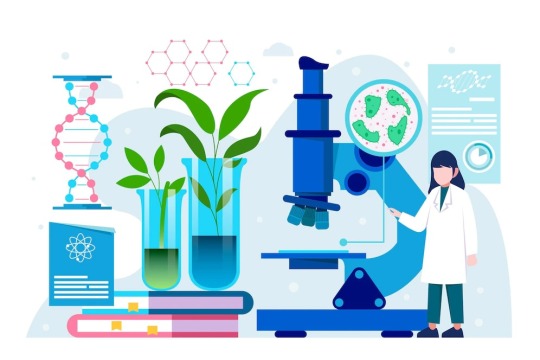
In 2023 biotechnology and genomics are also likely to be the trending topics in tech innovation. This is largely due to advances in technology that enable further development of biotechnology and genomics. Companies have already invested heavily in biotechnology products and genetic editing, so continued expansion and improvement of these technologies are highly probable as funding increases. With growing interest surrounding biotechnology, initiatives such as CRISPR-Cas9 open up a once-impossible avenue for efficient gene editing research. It is expected that biotechnological breakthroughs will benefit the medical field more than ever before, from diagnosis and treatments to cures for a variety of diseases. As such, biotechnology and genomics are poised to shift the future of humanity.
Conclusion:

As we edge towards 2030, technology trends and innovations will no doubt come into play in changing our daily lives in ways both big and small. Additionally, 5G networks are providing us with lightning-fast connections and enabling numerous advances, particularly in tech innovations. 2023 could be a transformative year for both consumers and businesses alike as technology continues its rapid development cycle with no signs of slowing down anytime soon. Autonomous cars, artificial intelligence (AI), and cybersecurity are just a few topics that are sure to dominate tech discussions over the next few years as these technologies continue their evolution toward becoming widely adopted tools across industries worldwide. It’s an exciting time for those interested in technology. How happy your employees are, now technology will tell. So, make sure you stay up to date on these topics if you want your business or organization to remain competitive against its rivals!
#techinnovation#technovation#techtrends#techtrendsin2023#technologyin2023#employeetech#technologyinemployeeexperience
9 notes
·
View notes
Text
"Unveiling the Future: How Data Science is Revolutionizing Upcoming Industries"
Data science continues to have a substantial impact on various industries, and its scope is expected to expand as new technologies emerge and businesses realize the potential of data-driven insights. Here are some upcoming industries where data science is likely to play a significant role:
Healthcare and Life Sciences: Data science can aid in personalized medicine, drug discovery, predictive analytics for patient outcomes, and healthcare operations optimization.
Financial Services: Financial institutions use data science for fraud detection, risk assessment, algorithmic trading, customer behavior analysis, and credit scoring.
Retail and E-Commerce: Data science helps optimize inventory management, pricing strategies, recommendation systems, and customer segmentation for targeted marketing.
Energy and Utilities: The energy sector benefits from data analytics for smart grid management, predictive maintenance of equipment, and energy consumption optimization.
Manufacturing: Data science improves manufacturing processes through predictive maintenance, quality control, supply chain optimization, and demand forecasting.
Agriculture: Precision agriculture utilizes data science to optimize crop yield, resource allocation, pest control, and environmental monitoring.
Transportation and Logistics: Data science plays a role in route optimization, fleet management, demand forecasting, and autonomous vehicles.
Telecommunications: Data science assists in customer churn prediction, network optimization, and personalized service offerings.
Media and Entertainment: Content recommendation, audience segmentation, and analyzing viewer engagement are areas where data science is making an impact.
Real Estate: Data science helps in property price prediction, market trend analysis, and investment decision-making.
Environmental Conservation: Data science aids in monitoring and analyzing environmental data, including climate patterns, pollution levels, and habitat preservation.
Education: Data science can personalize learning experiences, assess student performance, and optimize educational resources.
Government and Public Services: Data-driven decision-making is becoming increasingly important for optimizing public services, policy formulation, and resource allocation.
Insurance: Insurers use data science for risk assessment, claims processing, fraud detection, and customized pricing.
Travel and Tourism: Data science enhances traveler experiences through personalized recommendations, pricing optimization, and destination insights.
Pharmaceuticals: Data science plays a role in drug discovery, clinical trials optimization, and pharmacovigilance.
Smart Cities: The concept of smart cities involves integrating data science for efficient urban planning, traffic management, energy consumption, and public services.
Cybersecurity: Data science helps in identifying and responding to cyber threats by analyzing patterns and anomalies in network data.
As technology continues to advance and businesses recognize the value of data-driven insights, certybox is creating a difference in providing the top professional courses along with job assistance. It's essential for professionals in the field to stay updated with the latest developments and tools to make the most of these opportunities.
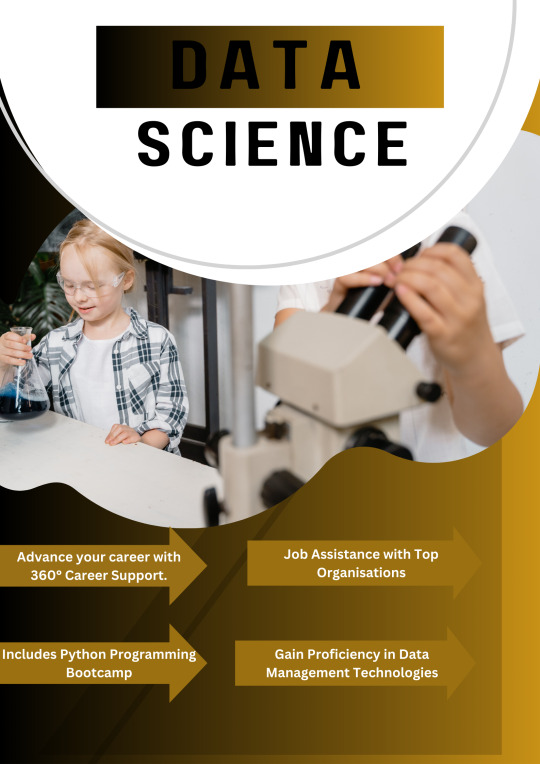
5 notes
·
View notes
Text
Understanding Population Demographics: Key Insights from Population Demographic Reports
Population demographics play a crucial role in understanding the composition, trends, and characteristics of a population.
By analyzing population demographic reports, researchers, policymakers, and businesses will be able to gain valuable insights that inform decision-making processes. This blog explores the significance of population demographics and highlights key findings from demographic reports.

What are Population Demographics?
Population demographics refer to the statistical characteristics of a population, including its size, age distribution, gender composition, racial and ethnic makeup, education levels, income distribution, and more. These factors provide a comprehensive snapshot of the population's structure and dynamics. Population demographic reports compile and analyze data collected through census surveys, national surveys, and other sources to present a detailed overview of the population's characteristics.
Understanding Age Distribution: Age distribution is a fundamental aspect of population demographics. It examines the proportion of individuals across different age groups within a population. This information is vital for understanding societal needs and planning for healthcare, education, and social services. Demographic reports can reveal insights such as an aging population, youth bulges, or variations in age groups across regions, helping policymakers develop appropriate policies and programs. For example, countries with a large aging population may need to allocate resources for healthcare and retirement benefits, while those with a significant youth population may focus on education and employment opportunities.
Unveiling Diversity: Race and Ethnicity: Population demographic reports also shed light on the racial and ethnic composition of a population. This data is crucial for addressing issues related to equity, inclusion, and social justice. By examining demographic trends, researchers can identify disparities, evaluate representation, and design targeted interventions to bridge gaps and promote diversity. For instance, demographic reports may highlight underrepresented communities that require targeted support in areas such as education, employment, and political representation. Understanding racial and ethnic diversity is essential for creating inclusive policies and fostering a society that values and celebrates its multicultural fabric.
Income Distribution and Socioeconomic Status: Another critical aspect of population demographics is income distribution and socioeconomic status. Demographic reports do provide data on income levels, poverty rates, employment rates, and educational attainment. These insights enable policymakers to develop strategies for poverty reduction, social welfare, and economic development. Businesses can also leverage this data to identify consumer segments and make informed marketing decisions.
Migration Patterns and Urbanization: Demographic reports often include information about migration patterns and urbanization trends. Understanding population movements helps policymakers plan infrastructure development, housing needs, and transportation systems. It also offers insights into cultural diversity, economic opportunities, and the impact of migration on local communities.
Conclusion:
Population demographic reports are invaluable sources of information that allow us to understand the composition, trends, and characteristics of a population. By analyzing these reports, researchers, policymakers, and businesses can make informed decisions that promote social and economic development, equity, and inclusive in diverse communities.
3 notes
·
View notes
Text
The Power of Software Development: Transforming Ideas into Reality
Introduction: Software development is the driving force behind technological innovation in our digital age. From mobile applications to enterprise systems, software development has the power to transform ideas into functional and impactful solutions. In this short blog, we will explore the significance of software development and its ability to shape our modern world.
Solving Real-World Problems: Software development enables us to address real-world challenges and improve efficiency across various industries. For instance, in the healthcare sector, software solutions have revolutionized patient management systems, electronic health records, and telemedicine platforms, enhancing the quality and accessibility of healthcare services. Similarly, in the transportation industry, software plays a crucial role in logistics optimization, route planning, and driver management, leading to cost savings and improved delivery times.
Enhancing User Experiences: Well-designed software applications can significantly enhance user experiences. Whether it's a user-friendly mobile app or a sleek web interface, software developers strive to create intuitive and engaging experiences for users. By leveraging user-centered design principles and incorporating feedback from usability testing, software developers can create interfaces that are visually appealing, easy to navigate, and seamlessly integrate with users' daily lives.
Empowering Businesses: Software development empowers businesses by providing them with custom solutions tailored to their specific needs. From customer relationship management (CRM) systems to inventory management software, businesses can leverage software to streamline operations, automate repetitive tasks, and gain valuable insights from data analysis. This allows organizations to make informed decisions, improve productivity, and stay ahead in a competitive market.
Enabling Innovation: Software development is at the forefront of innovation, constantly pushing the boundaries of what is possible. Through advancements in artificial intelligence (AI), machine learning, and data analytics, software developers have the tools to develop intelligent systems that can automate processes, make predictions, and provide personalized recommendations. These innovations have led to breakthroughs in fields like healthcare diagnostics, autonomous vehicles, and personalized marketing strategies.
Collaboration and Open Source: Collaboration is a key aspect of software development. The open-source movement has fostered a culture of sharing and collaboration, allowing developers worldwide to contribute to projects, share code, and build upon existing solutions. This collaborative nature of software development encourages knowledge sharing and helps accelerate innovation.
Continuous Improvement: Software development is a dynamic field that embraces continuous improvement. Developers are constantly refining their skills, adopting new technologies, and staying up to date with industry trends. This dedication to continuous learning and improvement ensures that software solutions are efficient, secure, and capable of adapting to changing user needs.
Conclusion: Software development is a powerful tool that shapes our modern world, enabling us to solve problems, enhance user experiences, empower businesses, and drive innovation. From healthcare to transportation, education to entertainment, software development is at the core of technological advancements across industries. As technology continues to evolve, software developers will play a pivotal role in creating the software solutions that will shape our future.
#software#developer#software developer#software development#web devlopment#e commerce development#development#seo company
2 notes
·
View notes
Text
Global AI Accelerator Chip Market Expected to Grow Substantially Owing to Healthcare Industry

Global AI Accelerator Chip Market Expected to Grow Substantially Owing to Increased Use of AI Accelerator Chips in Healthcare Industry. The global AI accelerator chip market is expected to grow primarily due to its growing use in the healthcare industry. The cloud sub-segment is expected to flourish immensely. The market in the North American region is predicted to grow with a high CAGR by 2031. NEW YORK, March 17, 2023 - As per the report published by Research Dive, the global AI accelerator chip market is expected to register a revenue of $332,142.7 million by 2031 with a CAGR of 39.3% during the 2022-2031 period.
Dynamics of the Global AI Accelerator Chip Market
Growing use of AI accelerator chips across the global healthcare industry is expected to become the primary growth driver of the AI accelerator chip market in the forecast period. Additionally, the rise of the cyber safety business is predicted to propel the market forward. However, according to market analysts, lack of skilled AI accelerator chip workforce might become a restraint in the growth of the market. The growing use of AI accelerator chip semiconductors is predicted to offer numerous growth opportunities to the market in the forecast period. Moreover, the increased use of AI accelerator chips to execute AI workloads such as neural networks is expected to propel the AI accelerator chip market forward in the coming period.
COVID-19 Impact on the Global AI Accelerator Chip Market
The Covid-19 pandemic disrupted the routine lifestyle of people across the globe and the subsequent lockdowns adversely impacted the industrial processes across all sectors. The AI accelerator chip market, too, was negatively impacted due to the pandemic. The disruptions in global supply chains due to the pandemic resulted in a decline in the semiconductor manufacturing industry. Also, the travel restrictions put in place by various governments reduced the availability of skilled workforce. These factors brought down the growth rate of the market.
Key Players of the Global AI Accelerator Chip Market
The major players in the market include: - NVIDIA Corporation - Micron Technology Inc. - NXP Semiconductors N.V. - Intel Corporation - Microsoft Corporation - Advanced Micro Devices Inc. (AMD) - Qualcomm Technologies Inc. - Alphabet Inc. (Google Inc.) - Graphcore Limited. - International Business Machines Corporation These players are working on developing strategies such as product development, merger and acquisition, partnerships, and collaborations to sustain market growth. For instance, in May 2022, Intel Habana, a subsidiary of Intel, announced the launch of 2nd generation AI chips which according to the company, will provide a 2X performance advantage over the previous generation NVIDIA A100. This product launch will help Intel Habana to capitalize on this rather nascent market and will consolidate its lead over the competitors further.
What the Report Covers:
Apart from the information summarized in this press release, the final report covers crucial aspects of the market including SWOT analysis, market overview, Porter's five forces analysis, market dynamics, segmentation (key market trends, forecast analysis, and regional analysis), and company profiles (company overview, operating business segments, product portfolio, financial performance, and latest strategic moves and developments.)
Segments of the AI Accelerator Chip Market
The report has divided the AI accelerator chip market into the following segments: Chip Type: Graphics Processing Unit (GPU), Application-Specific Integrated Circuit (ASIC), Field Programmable Gate Arrays (FPGA), Central Processing Unit (CPU), and others Processing Type: edge and cloud Application: Natural Language Processing (NLP), computer vision, robotics, and network security Industry Vertical: financial services, automotive and transportation, healthcare, retail, telecom, and others Region: North America, Europe, Asia-Pacific, and LAMEA SegmentSub-SegmentChip TypeCentral Processing Unit (CPU) – Most dominant market share in 2021 - The use of CPU for improving the performance of a computer while running graphics and video editors are expected to push the growth of this sub-segment further.Processing TypeCloud – Significant revenue growth in 2021 Cloud acceleration chip helps content creators, publishers, and other entities to offer material to end users promptly which is predicted to propel the growth rate of the market higher.ApplicationNatural Language Processing (NLP) – Highest market share in 2021 Increased use of Natural Language Processing (NLP) due to its ability to make computer-human interactions more natural is expected to propel the sub-segment forward.Industry VerticalHealthcare– Huge market revenue in 2021 The growing use of AI by major healthcare companies to complement medical imaging is anticipated to offer numerous growth opportunities to the sub-segment in the forecast period.RegionNorth America – Most profitable by 2031 The development of new technologies in artificial intelligence (AI) accelerators in this region is predicted to propel the market in the forecast period. Read the full article
4 notes
·
View notes
Text
For more tech content like this Visit:
IT and Tech: Info Tech Online BANKING, ACCOUNTING, INSURANCE AND FINANCIAL SERVICES: Finance Tech Online HEALTHCARE AND PHARMACEUTICALS: HealthCare Tech Online TRANSPORTATION AND LOGISTICS: Transport Tech Online ENTERTAINMENT, TRAVEL AND HOSPITALITY: Entertainment Tech Online MARKETING, ADVERTISING AND PUBLIC RELATIONS: Channel Tech Online HUMAN RESOURCES COMPENSATION AND BENEFITS: Human Resources Tech Online MECHANICAL AND CIVIL ENGINEERING: Engineering Tech Online MANUFACTURING AND CONSTRUCTION: Manufacturing Tech Online NON-PROFIT AND NON-GOVERNMENT ORGANIZATIONS: Non Profit Tech Online
Want to promote your content?
2 notes
·
View notes
Text
What to Look for When Buying Residential Properties in Dubai
Buying residential properties in Dubai requires careful consideration of various factors to ensure you make a wise investment. This blog outlines what to look for when buying residential properties in Dubai.
For more information on real estate, visit Dubai Real Estate.
Location
Proximity to Amenities: Choose a location that offers easy access to essential amenities such as schools, healthcare facilities, shopping malls, and public transportation. Proximity to these amenities enhances the property's value and convenience.
Future Development Plans: Research future development plans in the area, including infrastructure projects, commercial developments, and recreational facilities. Areas with planned developments often experience appreciation in property values.
Neighborhood Safety: Ensure the neighborhood is safe and secure. Check crime rates and the presence of security measures such as gated communities and surveillance systems.
For property purchase options, explore Invest in Dubai Real Estate.
Property Condition
Structural Integrity: Inspect the property for any structural issues, such as cracks, leaks, or foundation problems. A property in good structural condition requires less maintenance and ensures a longer lifespan.
Interior and Exterior Finishes: Evaluate the quality of the interior and exterior finishes, including flooring, walls, roofing, and fixtures. High-quality finishes enhance the property's appeal and durability.
Age of the Property: Consider the age of the property. Newer properties may require less maintenance, while older properties might have historical charm but could need renovations.
For mortgage services, consider Mortgage Company in UAE.
Developer Reputation
Track Record: Research the developer's track record and reputation in the market. Established developers with a history of delivering high-quality projects on time are usually a safer choice.
Customer Reviews: Look for customer reviews and testimonials from previous buyers. Positive feedback and satisfied customers indicate the developer's reliability and commitment to quality.
Completed Projects: Visit completed projects by the developer to assess their construction quality, design, and overall appeal. This provides insights into what you can expect from the property you are considering.
For rental property management, visit Rent Your Property in Dubai.
Legal and Regulatory Compliance
Title Deed Verification: Ensure the property has a clear title and is free from any legal disputes or encumbrances. The DLD provides title deed verification services to help buyers confirm the property's legal status.
Sales Agreement: Review the sales agreement carefully and seek legal advice if needed. Ensure all terms and conditions are clearly outlined, including the price, payment schedule, and any additional costs.
Permits and Approvals: Verify that the property has all the necessary permits and approvals from relevant authorities. This includes building permits, occupancy certificates, and compliance with zoning regulations.
For property sales, visit sell your house.
Investment Potential
Rental Yield: Research the potential rental yield of the property. High rental yields indicate strong demand and profitability for rental properties. Areas with high rental demand, such as those near business districts or tourist attractions, tend to offer better returns.
Capital Appreciation: Consider the potential for capital appreciation. Properties in areas with ongoing infrastructure development, economic growth, and high demand are more likely to appreciate in value over time.
Market Trends: Stay informed about market trends and economic indicators that impact property values. This includes factors such as interest rates, inflation, and government policies affecting the real estate sector.
Real-Life Success Story
Consider the case of James, an investor who successfully bought a residential property in Jumeirah Village Circle. James conducted thorough research, inspected the property's condition, and chose a reputable developer. By following the guidelines outlined in this blog, James secured a high-yield investment and has seen significant appreciation in property value.
Future Trends in Dubai Real Estate
Sustainable Developments: There is a growing demand for eco-friendly and sustainable properties in Dubai. Developers are increasingly incorporating green building practices and energy-efficient features into their projects.
Smart Homes: The adoption of smart home technology is on the rise. Properties equipped with advanced security systems, automated lighting, and climate control are becoming more popular.
Mixed-Use Communities: Integrated communities that offer a mix of residential, commercial, and recreational facilities are gaining popularity. These developments provide residents with a convenient and holistic living experience.
Conclusion
When buying residential properties in Dubai, it is essential to consider factors such as location, property condition, developer reputation, legal compliance, and investment potential. By paying attention to these aspects, you can make a well-informed decision and secure a valuable investment. For more resources and expert advice, visit Dubai Real Estate.
2 notes
·
View notes
Text
Unlocking the Hidden Potential of Artificial Intelligence in the Business World
Introduction: Understanding What Artificial Intelligence Is and How It Can Help Businesses
Artificial Intelligence (AI) is a rapidly growing field of technology that has the potential to revolutionize the way businesses operate. AI is a set of computer algorithms that can be used to analyze large amounts of data and make decisions based on it. It can help businesses automate processes, improve customer service, and gain insights into their customers’ behavior. AI also offers businesses the ability to create more accurate predictions about their future performance and make better decisions in uncertain situations. With machine learning algorithms, AI can even provide personalized recommendations for customers based on their individual needs and preferences. Understanding what Artificial Intelligence is and how it can help businesses will be key to staying competitive in an ever-changing digital landscape.
How AI is Transforming Various Business Sectors & Industries
Artificial Intelligence (AI) is revolutionizing the way businesses operate, from automating mundane tasks to improving customer service and creating personalized experiences. AI technology is being used across various business sectors and industries, such as healthcare, retail, finance, transportation and more.
AI can be used to automate tedious processes in any sector or industry by leveraging machine learning applications. It can also help companies gain insights into customer behavior and preferences in order to better target their marketing campaigns. AI can also be used to improve customer service by providing automated responses or personalized recommendations based on customers’ past interactions with a company.
In this post, we will discuss how AI is transforming various business sectors & industries and explore some of the use cases of AI technology in the business world.
AI and Its Role in Enhancing Customer Experience
In today's world, customer experience is becoming increasingly important for businesses. AI technology can help companies optimize their customer experience by automating customer service tasks and providing customers with a more personalized experience. AI-powered chatbots are being used to provide customers with a more convenient and efficient way to get answers to their questions or resolve their issues, without having to wait on hold for long periods of time. Additionally, AI can be used to analyze customer data and provide insights that can help companies better understand their customers' needs and preferences. By leveraging the power of AI, businesses can ensure that they are providing the best possible customer experience.
The Benefits of AI-driven Automation & Automation Solutions for Businesses
Automation is the key to success in the modern business world. AI-driven automation solutions are helping businesses to streamline their operations and increase their efficiency. Automation software platforms are being used to automate mundane tasks, such as data entry, customer service, and marketing campaigns. AI automation software solutions have also been developed for businesses that require more complex processes. These solutions enable businesses to automate complex tasks such as supply chain management, inventory management, and financial forecasting. With AI-driven automation solutions, businesses can reduce costs and increase productivity while still maintaining accuracy and quality of results.
Exploring the Possibilities of AI-powered Analytics and Predictive Analysis
AI-powered analytics and predictive analysis are quickly becoming the norm in the business world. With the help of predictive analytics software, businesses can get insights into customer behavior and trends more accurately than ever before. Additionally, data analysis tools using AI technology can help organizations make better decisions by providing them with more accurate forecasts and predictions.
The possibilities of AI-powered analytics and predictive analysis are vast, from improving customer experience to optimizing operational efficiency. In this article, we will explore some of the most exciting use cases for these technologies, as well as their potential to revolutionize the way businesses operate.
Conclusion: The Future of Artificial Intelligence and businesses
The future of Artificial Intelligence (AI) and businesses is an exciting prospect. AI technology has the potential to revolutionize the way entrepreneurs do business, from predictive analytics software that can anticipate customer needs to data analysis tools that can provide insights into customer behavior. AI is already being used in a variety of ways by businesses, from chatbots to automated marketing campaigns. With the right investments and strategies, entrepreneurs can leverage AI to create powerful business tools that will help them stay ahead of their competition and succeed in today's digital world.
TO FIND A.I TOOLS THAT ENTREPRENEURS ARE USING TODAY TO SCALE THEIR BUSINESSES CLICK HERE NOW
4 notes
·
View notes